Introduction
Edamame, the Japanese term for fresh soybeans, are a delightful and nutritious snack enjoyed worldwide. Their sweet, earthy flavor and tender texture make them a perfect addition to salads, stir-fries, or simply as a standalone appetizer. However, one common challenge faced by home cooks is keeping edamame’s vibrant green color intact during the cooking process. Overcooked or improperly handled edamame can turn an unsightly yellow, losing both its aesthetic appeal and some of its fresh flavor. In this comprehensive guide, we will explore various techniques and tips to ensure your edamame stay beautifully green and delicious every time you cook them.
Understanding Edamame and Chlorophyll
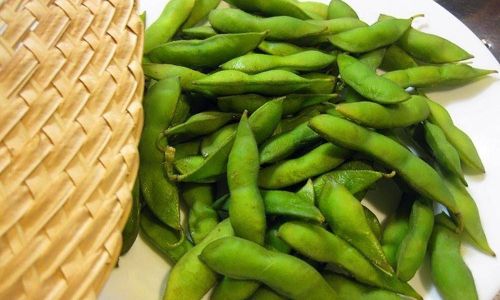
Before diving into the cooking methods, it’s essential to understand why edamame turn yellow. The vibrant green color of edamame comes from chlorophyll, a pigment that is sensitive to heat, light, and acidity. When exposed to these factors, chlorophyll breaks down, causing the beans to lose their color and, sometimes, flavor. Therefore, preserving chlorophyll is key to maintaining edamame’s appeal.
Selecting the Right Edamame
The first step in ensuring your edamame stay green is selecting high-quality beans. Look for pods that are firm, bright green, and free of bruises or discoloration. Fresh edamame will have a slightly sweet aroma and should feel heavy for their size, indicating they are plump and juicy. Avoid pods that are limp, yellowing, or have spots, as these are signs of aging or poor handling.
Preparation Techniques
-
Trimming the Pods
While some recipes call for removing the beans from their pods, cooking edamame in their pods not only preserves their shape but also helps retain their color. If you prefer to eat them pod-free, be gentle when shelling to avoid damaging the beans, which can accelerate chlorophyll loss.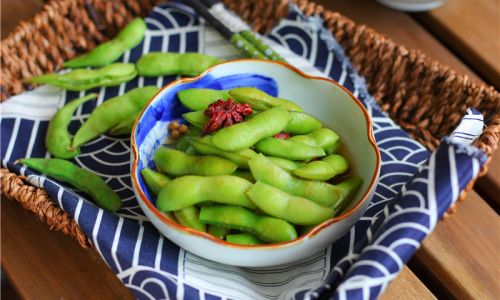
-
Rinsing and Soaking
Rinse your edamame thoroughly under cold running water to remove any dirt or debris. Some cooks recommend soaking edamame in cold water for 30 minutes before cooking. This step isn’t strictly necessary but can help the beans cook more evenly and retain their color better. If you do soak them, use a large bowl to ensure the beans have plenty of room and change the water if it becomes cloudy.
Cooking Methods
There are several ways to cook edamame, each with its own nuances for preserving color. Here, we’ll explore boiling, steaming, and stir-frying.
-
Boiling Edamame
Boiling is the most common method for cooking edamame, but it requires careful attention to avoid overcooking.- Boiling Water Method: Fill a large pot with water and bring it to a rolling boil. Add a pinch of salt (optional) and a tablespoon of baking soda. The baking soda helps maintain the beans’ bright green color by raising the water’s pH, which stabilizes chlorophyll.
- Blanching Technique: Once the water is boiling, carefully add the edamame pods. Use a slotted spoon or strainer to submerge them gently to avoid splashing hot water on yourself. Blanch for 3-5 minutes, depending on your preference for tenderness. Test for doneness by biting into a bean; it should be tender but not mushy.
- Immediate Cooling: Once cooked, quickly remove the edamame from the boiling water using a colander and plunge them into an ice water bath. This stops the cooking process and locks in the color. Let them sit in the ice water for a couple of minutes before draining and patting them dry.
-
Steaming Edamame
Steaming is a healthier alternative to boiling as it preserves more nutrients and flavor.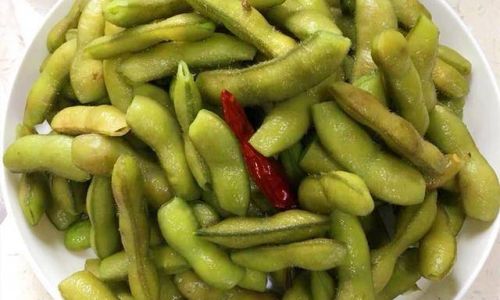
- Set Up the Steamer: Fill the bottom of your steamer with water and bring it to a simmer. Place the edamame pods in the steaming basket, making sure they are not overcrowded.
- Steam Time: Cover the steamer and steam for about 5-7 minutes, or until the beans are tender. Check for doneness by testing a bean as described above.
- Serve Hot or Cold: Once steamed, you can serve the edamame hot, or let them cool to room temperature or chill in the refrigerator before serving.
-
Stir-Frying Edamame
Stir-frying edamame adds a delicious, slightly smoky flavor and is perfect for incorporating into dishes like stir-fries or salads.- Heat the Pan: Preheat a non-stick skillet or wok over medium-high heat and add a small amount of oil (such as sesame or vegetable oil).
- Add Aromatics: Optionally, add minced garlic, ginger, or red pepper flakes to the hot oil and stir-fry for a few seconds until fragrant.
- Cook the Edamame: Add the shelled edamame to the pan and stir-fry for about 3-5 minutes, stirring frequently to ensure even cooking. You can add a splash of water or broth if the pan becomes too dry.
- Season and Serve: Season with salt, pepper, and any additional spices or herbs to taste. Serve immediately or let cool for later use.
Storage and Reheating
Proper storage and reheating are crucial for maintaining edamame’s color and texture.
- Storing Cooked Edamame: Let cooked edamame cool completely before storing in an airtight container in the refrigerator. They can be kept for up to 3 days. For longer storage, freeze them in single-layer portions on a baking sheet before transferring to freezer bags.
- Reheating Tips: To reheat, steam or microwave the edamame until heated through. Avoid overcooking, as this can cause further discoloration. If microwaving, use a low setting and stir occasionally to prevent hot spots.
Creative Serving Ideas
Edamame is versatile and can be enjoyed in various ways beyond plain boiling or steaming. Here are some creative serving suggestions:
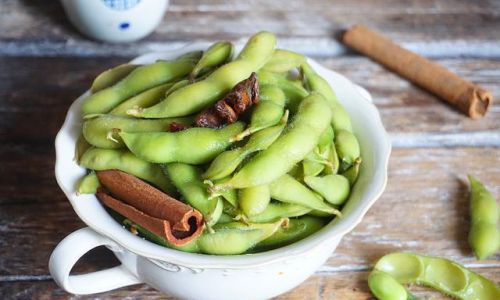
- Edamame Salad: Toss cooked edamame with cherry tomatoes, cucumber, red onion, and a light vinaigrette for a refreshing summer salad.
- Edamame Dip: Blend cooked edamame with a bit of tahini, lemon juice, garlic, and salt for a nutritious and flavorful dip.
- Stir-Fry Additions: Incorporate edamame into your favorite stir-fry recipes for added protein and texture.
- Snack Mix: Mix cooked edamame with nuts, seeds, and dried fruit for a healthy, portable snack.
Conclusion
Cooking edamame without turning them yellow is achievable with the right techniques and attention to detail. By understanding the science behind chlorophyll preservation, selecting fresh beans, and carefully controlling the cooking process, you can enjoy beautifully green, delicious edamame every time. Whether you prefer boiling, steaming, or stir-frying, these methods will help you maintain edamame’s vibrant color and fresh flavor. With their nutritional benefits and versatility, edamame are a fantastic addition to any meal, making them a must-have in your kitchen repertoire. Happy cooking!

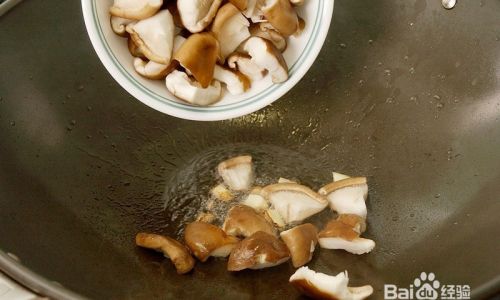

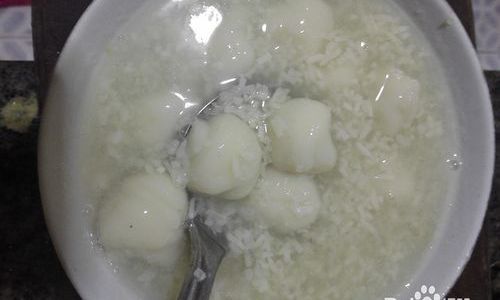
0 comments